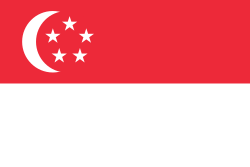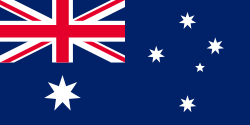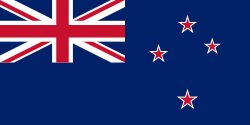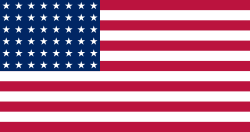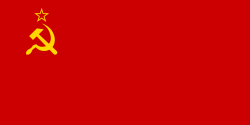Malajské povstání
| Malajské povstání Darurat Malaya 馬來亞緊急狀態 மலாயா அவசரகாலம் | |||
|---|---|---|---|
| konflikt: dekolonizace Asie a studená válka | |||
 Australský bombardér Avro Lincoln shazuje pumy na malajskou džungli proti komunistickým rebelům | |||
| Trvání | 16. června 1948 – 31. července 1960 (12 let, 1 měsíc a 13 dnů) | ||
| Místo | Britské Malajsko | ||
| Výsledek | Vojenské vítězství Commonwealthu Nezávislost Malajské federace 31. srpna 1957 | ||
| Strany | |||
| |||
| Ztráty | |||
| |||
| Mrtví civilisté: 2 478 Pohřešovaní civilisté: 810 Civilní ztrátys: 5 000+ Celkem mrtvých: 11 053 | |||
| Některá data mohou pocházet z datové položky. | |||
Malajské povstání, anglicky Malayan Emergency, známé také jako protibritská národní osvobozenecká válka (1948–1960), byla partyzánská válka vedená v Britském Malajsku mezi komunistickými bojovníky za nezávislost z řad Malajské národní osvobozenecké armády (MNLA) a britskými vojenskými silami a Commonwealthem. Komunisté bojovali, aby získali nezávislost Malajska na Britském impériu a zavedli socialistickou ekonomiku, zatímco síly Commonwealthu bojovaly proti komunismu a chránily britské ekonomické a koloniální zájmy.[1][2] Konflikt MNLA názývala „Anti–British National Liberation War“[3] (protibritská národní osvobozenecká válka) ale Britové jako „výjimečný stav“, (emergency) protože v Londýně sídlící pojistitelé by v případě občanských válek nevypláceli.[4]
17. června 1948 vyhlásila Británie po útocích na plantáže v Malajsku výjimečný stav,[5] což byly odvetné útoky za zabití levicových aktivistů. Vůdce Malajské komunistické strany (MCP) Chin Peng a jeho spojenci uprchli do džungle a vytvořili MNLA, aby vedli válku za národní osvobození proti britské koloniální nadvládě. Mnoho bojovníků MNLA bylo veterány malajské lidové protijaponské armády (MPAJA), komunistické partyzánské armády, která byla dříve vycvičena, vyzbrojena a financovaná Brity k boji proti Japonsku během druhé světové války.[6] Komunisté získali podporu velkého počtu civilistů, především těch z čínské komunity.[7]
Po zřízení řady základen v džungli začala MNLA útočit na britskou koloniální policii a vojenská zařízení. Doly, plantáže a vlaky byly napadány MNLA, aby Malajsko získalo nezávislost bankrotem britské okupace. Britové se pokusili vyhladovět MNLA pomocí taktiky spálené země prostřednictvím přidělování potravin, zabíjení dobytka a leteckého postřiku herbicidem Agent Orange.[pozn. 1] Britské pokusy porazit komunisty zahrnovaly mimosoudní zabíjení neozbrojených vesničanů v rozporu s Ženevskými konvencemi.[13] Nechvalně známým příkladem je masakr v Batang Kali, který britský tisk označil za „britský Mỹ Lai“.[pozn. 2] Briggsův plán násilně přemístil 400 000 až jeden milion civilistů do koncentračních táborů, které Britové označovali jako „nové vesnice“.[18][19][20] Mnoho domorodých komunit Orang Asli se internace také dotkla, protože Britové věřili, že podporují komunisty.[21][22]
Přestože byl výjimečný stav v roce 1960 ukončen, komunistický vůdce Chin Peng v roce 1967 obnovil povstání proti malajské vládě. Tato další fáze povstání trvala až do roku 1989.
Odkazy
Poznámky
Reference
- ↑ Deery, Phillip. "Malaya, 1948: Britain's Asian Cold War?" Journal of Cold War Studies 9, no. 1 (2007): 29–54.
- ↑ Siver, Christi L. "The other forgotten war: understanding atrocities during the Malayan Emergency." In APSA 2009 Toronto Meeting Paper. 2009., p.36
- ↑ AMIN, Mohamed. The Making of a Neo Colony. Redakce Caldwell Malcolm. [s.l.]: Spokesman Books, UK, 1977. S. 216.
- ↑ BURLEIGH, Michael. Small Wars, Faraway Places: Global Insurrection and the Making of the Modern World 1945–1965. New York: Viking – Penguin Group, 2013. ISBN 978-0-670-02545-9. S. 164.
- ↑ BURLEIGH, Michael. Small Wars Faraway Places: Global Insurrection and the Making of the Modern World 1945–1965. New York: Viking – Penguin Group, 2013. ISBN 978-0-670-02545-9. S. 163–164.
- ↑ HACK, Karl. Taylor and Francis Online. Everyone Lived in Fear: Malaya and the British way of Counterinsurgency. Small Wars and Insurgencies. 28 September 2012, s. 672. Dostupné online. DOI 10.1080/09592318.2012.709764. S2CID 143847349.
- ↑ Datar, Rajan (host), with author Sim Chi Yin; academic Show Ying Xin (Malaysia Institute, Australian National University); and academic Rachel Leow (University of Cambridge): "The Malayan Emergency: A long Cold War conflict seen through the eyes of the Chinese community in Malaya," November 11, 2021, The Forum (BBC World Service), (radio program) BBC, retrieved November 11, 2021
- ↑ The Malayan Emergency - Britain's Vietnam, Except Britain Won [online]. Gerrards Cross: British Forces Broadcasting Service, 4 October 2021. Dostupné v archivu pořízeném z originálu dne 5 October 2021. (anglicky)
- ↑ MANN, Michael. The Sources of Social Power. Volume 4: Globalizations, 1945–2011. Cambridge: Cambridge University Press, 2013. Dostupné online. ISBN 9781107028678. S. 16.
- ↑ HAY, Alastair. The Chemical Scythe: Lessons of 2, 4, 5-T, and dioxin. New York: Plenum Press / Springer Nature, 1982. Dostupné online. ISBN 9780306409738. DOI 10.1007/978-1-4899-0339-6. S2CID 29278382. S. 149–150.
- ↑ JACOB, Claus; WALTERS, Adam. Ethics Of Chemistry: From Poison Gas to Climate Engineering. Redakce Schummer Joachim. Singapore: World Scientific, 2021. Dostupné online. ISBN 978-981-123-353-1. DOI 10.1142/12189. S2CID 233837382. Kapitola Risk and Responsibility in Chemical Research: The Case of Agent Orange, s. 169–194.
- ↑ Newsinger 2015, s. 52.
- ↑ SIVER, Christi. Military Interventions, War Crimes, and Protecting Civilians. Cham: Palgrave Macmillan / Springer Nature, 2018. Dostupné online. ISBN 978-3-319-77690-3. DOI 10.1007/978-3-319-77691-0. Kapitola Enemies or Friendlies? British Military Behavior Toward Civilians During the Malayan Emergency, s. 2–8, 19–20, 57–90.
- ↑ A mistake or murder in cold blood? Court to rule over 'Britain's My Lai'. The Times. London: 28 April 2012. Dostupné online. (anglicky)
- ↑ CONNETT, David. Batang Kali killings: Britain in the dock over 1948 massacre in. The Independent. London: 18 April 2015. Dostupné online. (anglicky)
- ↑ BOWCOTT, Owen. Batang Kali relatives edge closer to the truth about 'Britain's My Lai massacre'. The Guardian. London: 25 January 2012. Dostupné online. (anglicky)
- ↑ HUGHES, Matthew. Introduction: British ways of counter-insurgency. Small Wars & Insurgencies. London: Taylor & Francis, October 2012, s. 580–590. DOI 10.1080/09592318.2012.709771.
- ↑ KEO, Bernard Z. A small, distant war? Historiographical reflections on the Malayan Emergency. History Compass. Hoboken: Wiley-Blackwell, March 2019, s. e12523. DOI 10.1111/hic3.12523. S2CID 150617654.
- ↑ Newsinger 2015, s. 50, 'Their homes and standing crops were fired, their agricultural implements were smashed and their livestock either killed or turned loose. Some were subsequently to receive compensation, but most never did. They were then transported by lorry to the site of their "new village" which was often little more than a prison camp, surrounded by a barbed wire fence, illuminated by searchlights. The villages were heavily policed with the inhabitants effectively deprived of all civil rights.'.
- ↑ SANDHU, Kernial Singh. The Saga of the "Squatter" in Malaya. Journal of Southeast Asian History. Cambridge: Cambridge University Press, March 1964, s. 143–177. DOI 10.1017/s0217781100002258.
- ↑ JONES, Alun. The Orang Asli: An Outline of Their Progress in Modern Malaya. Journal of Southeast Asian History. Cambridge: Cambridge University Press, September 1968, s. 286–305. DOI 10.1017/s0217781100004713.
- ↑ IDRUS, Rusalina. The Discourse of Protection and the Orang Asli in Malaysia. Kajian Malaysia. Penang: Universiti Sains Malaysia, 2011, s. 53–74. Dostupné online.
Externí odkazy
 Obrázky, zvuky či videa k tématu Malajské povstání na Wikimedia Commons
Obrázky, zvuky či videa k tématu Malajské povstání na Wikimedia Commons
Média použitá na této stránce
Flag of Southern Rhodesia (1924–1964).
Flag of Australia, when congruence with this colour chart is required (i.e. when a "less bright" version is needed).
See Flag of Australia.svg for main file information.The national flag of Kingdom of Thailand; there are total of 3 colours:
- Red represents the blood spilt to protect Thailand’s independence and often more simply described as representing the nation.
- White represents the religion of Buddhism, the predominant religion of the nation
- Blue represents the monarchy of the nation, which is recognised as the centre of Thai hearts.
US Flag with 48 stars. In use for 47 years from July 4, 1912, to July 3, 1959.
Avro Lincoln Bomber A73-33 of No. 1 Squadron RAAF on a bombing mission over the Malayan jungle. Two 500 pound bombs can be seen falling from the aircraft.
Autor: No machine-readable author provided. Nightstallion assumed (based on copyright claims)., Licence: CC BY-SA 2.5
Flag of the Federation of Malaya.
This flag should not be confused with the flag of Malaysia. The flag of Malaya has 11 stripes and 11 spokes in the star. The flag of Malaysia has 14 stripes and 14 spokes.
Autor: Simitukidia and Lokal Profil, Licence: CC BY-SA 3.0
Flag of Fiji from 1924 to 1970
Flag of the Malayan National Liberation Army
Flag of Southern Rhodesia (1924–1964).
Flag of the Federation of Rhodesia and Nyasaland
Autor: Oren neu dag, Licence: CC BY-SA 3.0
Flag of Colonial Kenya, between the years 1921-1963.

